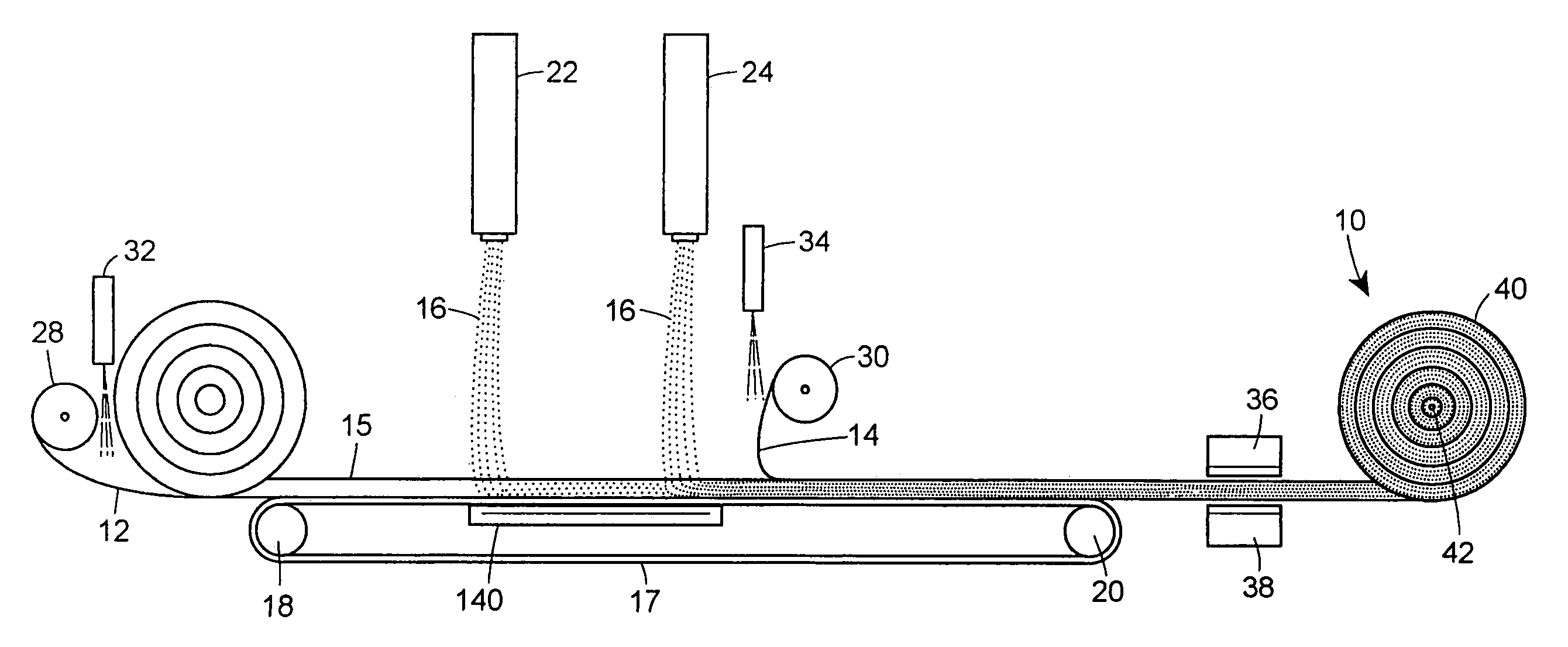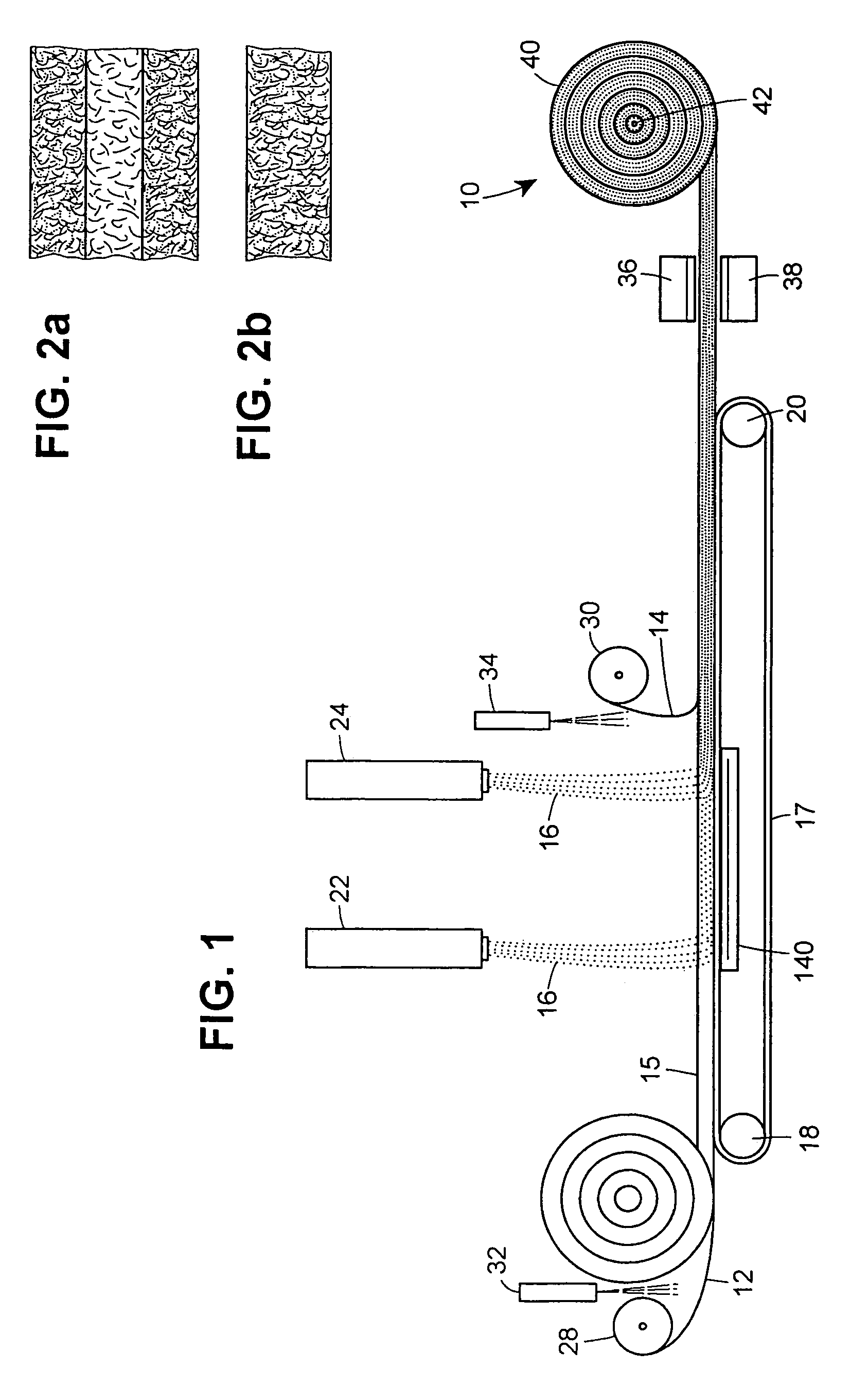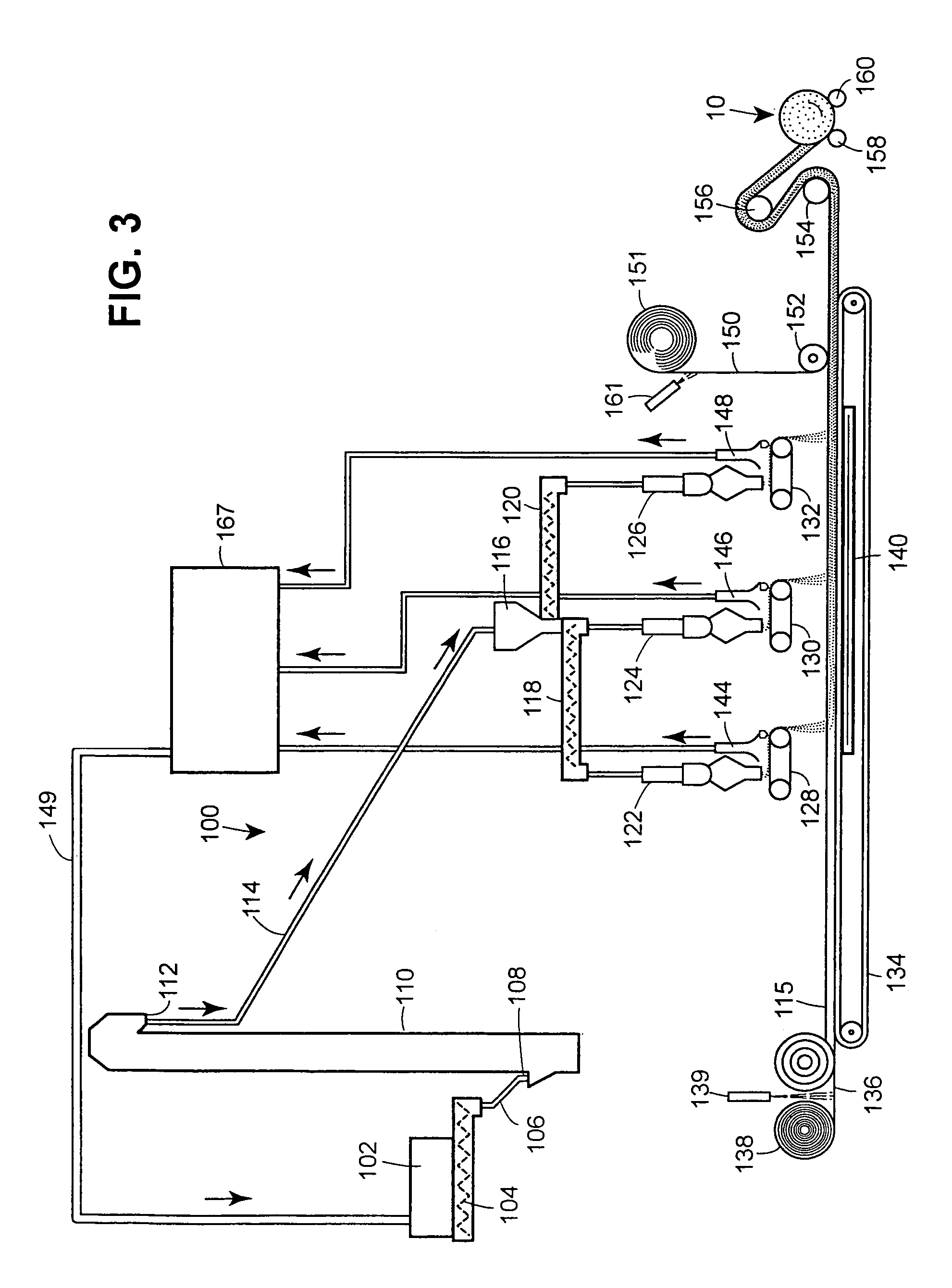Bioremediation mat and method of manufacture and use
a bioremediation mat and biocomposite technology, applied in the direction of synthetic resin layered products, geotextiles, foundation engineering, etc., can solve the problems of cometabolic degradation not yielding any energy or growth benefit, and pressure restricting the aqueous flow through the ma
- Summary
- Abstract
- Description
- Claims
- Application Information
AI Technical Summary
Benefits of technology
Problems solved by technology
Method used
Image
Examples
example 1
(Activated Carbon Only)
[0063]The lower cover fabric was a 1.5 ounce / yd2 pointbonded polyester nonwoven fabric. Using hot air blowers, this lower cover fabric was laminated to the Core fabric which consisted of 12 ounces / yd2 high loft polyester nonwoven fabric. To this assembly 0.5 pounds of activated carbon was vibrated into the core nonwoven fabric. After the activated carbon had settled into the core nonwoven fabric, a top cover nonwoven was hot air laminated to the upper surface of the core nonwoven. The upper cover fabric was a 1.5 ounce / yd2 pointbonded polyester nonwoven fabric.
example 2
(Activated Carbon and Bacteria)
[0064]In a hopper with a mechanical mixer, 20 pounds of activated carbon and 10 pounds of solid bacteria (baking yeast) were uniformly mixed. On the reactive core mat production line, the following steps were used to construct the bioremediation mat containing activated carbon and bacteria. The lower cover fabric was a 1.5 ounce / yd pointbonded polyester nonwoven fabric. Using hot air blowers, this lower cover fabric was laminated to the Core fabric which consisted of 12 ounces / yd2 high loft polyester nonwoven fabric. To this assembly 0.7 pounds / ft2 of the activated carbon / bacteria mixture was vibrated into the core nonwoven fabric. After the activated carbon / bacteria mixture had settled into the core nonwoven fabric, a top cover nonwoven was hot air laminated to the upper surface of the core nonwoven. The upper cover fabric was a 1.5 ounce / yd2 pointbonded polyester nonwoven fabric.
example 3
(Organoclay and Bacteria)
[0065]In a hopper with a mechanical mixer, 15 pounds of organoclay and 15 pounds of solid bacteria (baking yeast) were uniformly mixed. On the reactive core mat production line, the following steps were used to construct the bioremediation mat containing organoclay and bacteria. The lower cover fabric was a 1.5 ounce / yd2 pointbonded polyester nonwoven fabric. Using hot air blowers, this lower cover fabric was laminated to the Core fabric which consisted of 12 ounces / yd2 high loft polyester nonwoven fabric. To this assembly 0.86 pounds / ft2 of the organoclay / bacteria mixture was vibrated into the core nonwoven fabric. After the organoclay / bacteria mixture had settled into the core nonwoven fabric, a top cover nonwoven was hot air laminated to the upper surface of the core nonwoven. The upper cover fabric was a 1.5 ounce / yd2 pointbonded polyester nonwoven fabric.
PUM
| Property | Measurement | Unit |
|---|---|---|
| thickness | aaaaa | aaaaa |
| opening size | aaaaa | aaaaa |
| size | aaaaa | aaaaa |
Abstract
Description
Claims
Application Information
 Login to View More
Login to View More - R&D
- Intellectual Property
- Life Sciences
- Materials
- Tech Scout
- Unparalleled Data Quality
- Higher Quality Content
- 60% Fewer Hallucinations
Browse by: Latest US Patents, China's latest patents, Technical Efficacy Thesaurus, Application Domain, Technology Topic, Popular Technical Reports.
© 2025 PatSnap. All rights reserved.Legal|Privacy policy|Modern Slavery Act Transparency Statement|Sitemap|About US| Contact US: help@patsnap.com



